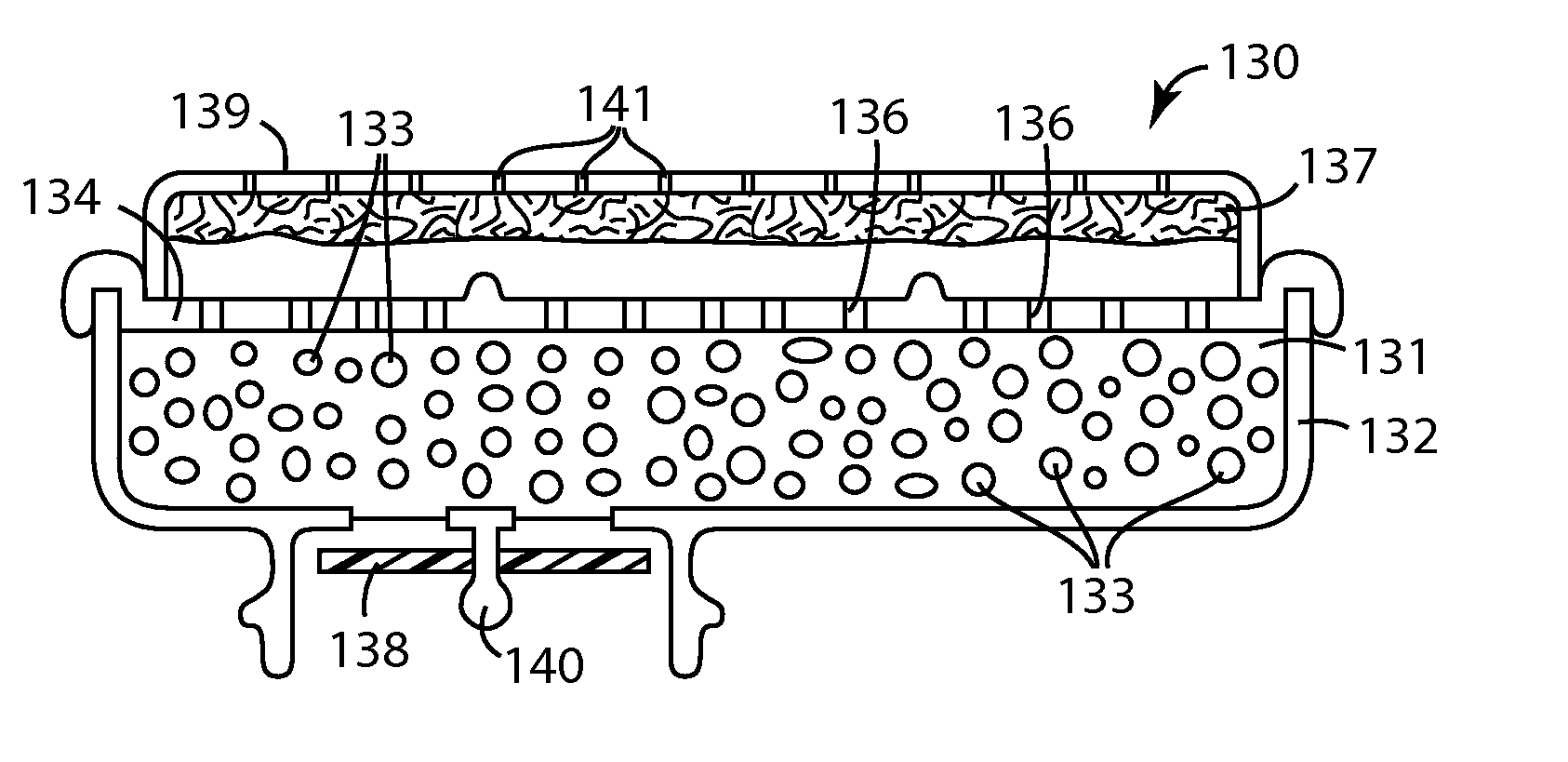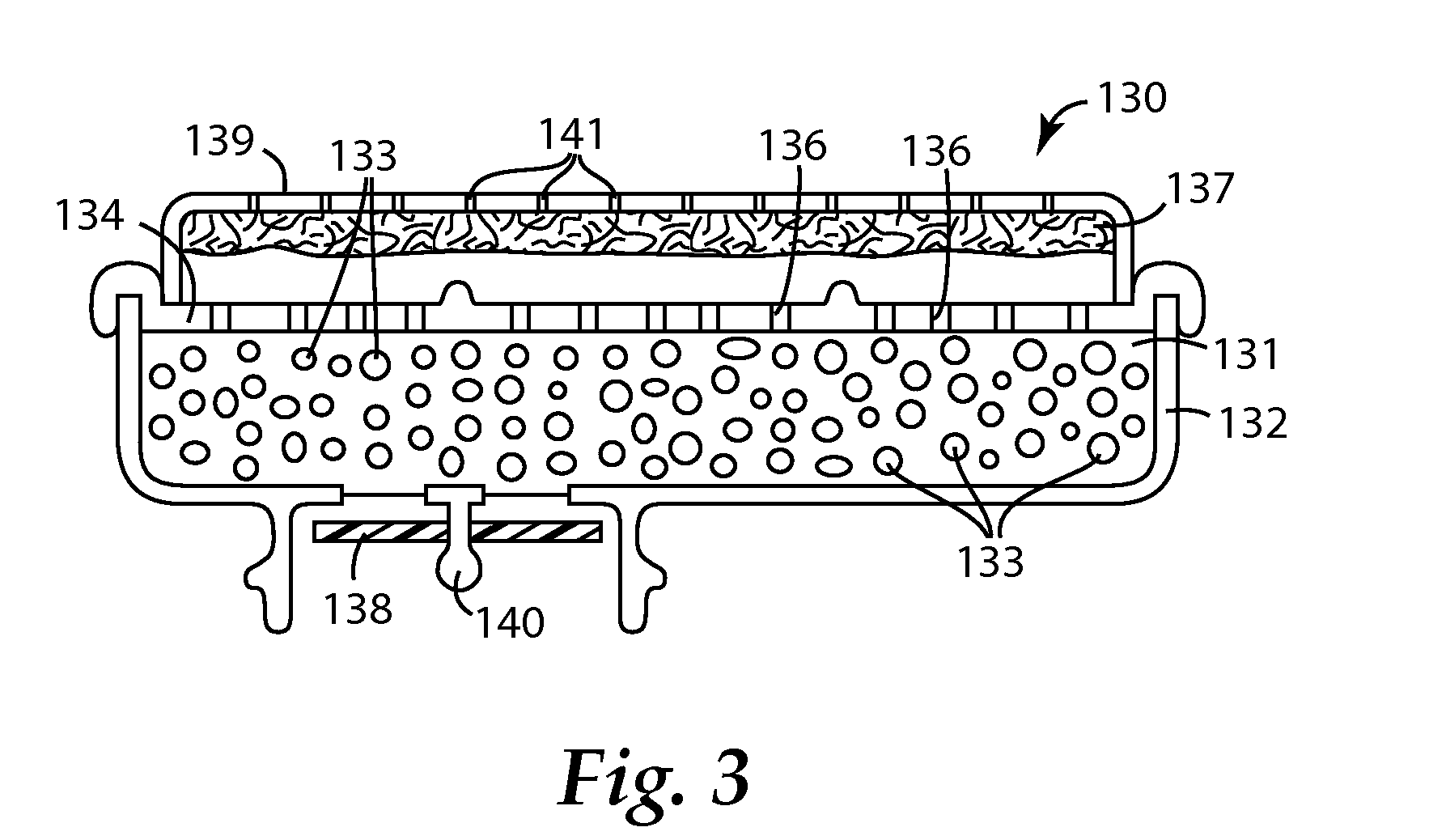Adducts of amines and polycarboxylic acids, and filter media comprising such adducts
a technology of polycarboxylic acid and amine, which is applied in the direction of physical/chemical process catalysts, other chemical processes, separation processes, etc., can solve the problems of gold catalysts that are known to be susceptible to poisoning, and achieve the effects of reducing the effectiveness of certain catalysts, reducing the volatility of teda, and reducing the undesirable side effects of teda
- Summary
- Abstract
- Description
- Claims
- Application Information
AI Technical Summary
Benefits of technology
Problems solved by technology
Method used
Image
Examples
example 1
TEDA-Succinic Acid
A solution of TEDA (11.8 g, 0.1 mole) in 50 mL water was prepared. 5.9 g (0.05 mole) succinic acid was stirred into 50 mL water, which provided a hazy appearing suspension or solution. The TEDA solution and the succinic acid solution were combined and stirred, at which point a clear, colorless solution was obtained. Water was removed at 50° C. under reduced pressure during which process a solid product precipitated from solution. The solid was kept under dynamic vacuum for 16 hrs, after which the final solid product weighed 11.2 g.
Elemental analysis revealed the following elements to be present at the weight percentages reported below. Also presented (in parentheses) are the calculated weight percentages that correspond to a chemical formula of C10H18N2O4, which would represent a 1:1 stoichiometric ratio of TEDA (C6H12N2) and succinic acid (C4H6O4).
(Experimentally-Found Versus 1:1 Stoichiometric Ratio-Calculated Weight Percentages are Reported Similarly in Succeedi...
example 2
TEDA-Succinic Acid-H2O
Succinic acid (5.9 g, 0.05 mole) and TEDA (5.6 g, 0.05 mole) were dissolved in 500 mL ethanol at 60° C. The clear solution was placed in a beaker and left to evaporate. After 3 days, only about 50 mL solvent remained. Filtration yielded 9.4 g (81%) white crystals that were washed twice with 5 mL of cold ethanol then air dried. After cooling o 4° C., the combined filtrate and washings deposited 1.3 g additional product.
Elemental analysis (experimentally found versus calculated for C10H20N2O5):
Carbon 48.3 (48.4); Hydrogen 7.7 (8.1); Nitrogen 9.8 (11.3),
X-ray diffraction revealed at least the following peaks: 3.9 (100), 5.0 (89), 4.3 (62), 5.6 (55), 3.8 Å (51).
Infrared analysis revealed at east the following peaks: 3561, 3476, 2480 (broad), 1690, 1642 cm−1.
Thermal Gravimetric Analysis (TGA) revealed about a 6% weight loss by 126° C. This appeared to represent loss of approximately one water of hydration per adduct (the calculated weight loss which would be expecte...
example 3
TEDA-Tartaric Acid
TEDA (11.2 g, 0.1 mole) and tartaric acid (L-(+)-tartaric acid, 15.0 g, 0.1 mole, Merck Co., Rahway, N.J.) were combined with stirring in 50 mL warm water. Water was removed at 60° C. using a rotary evaporator. The residue was kept under dynamic vacuum at 60° C. for 24 hrs. There remained 25.6 g (98%) of product as white chunks.
Elemental analysis (experimentally found versus calculated for C10H18N2O6):
Carbon 45.9 (45.8); Hydrogen 7.0 (6.9); Nitrogen 10.8 (10.7).
X-ray diffraction revealed at least the following peaks: 4.9 (16), 4.5 (100), 2.4 Å (16).
Infrared analysis revealed at least the following peaks: 3423, 3340, 1649 cm−1
Differential scanning calorimetry analysis revealed a melting endotherm at 66° C. (without recrystallization).
15N nuclear magnetic resonance (NMR) of the solid product revealed at least a peak at δ30 (ppm, with respect to liquid NH3).
PUM
| Property | Measurement | Unit |
|---|---|---|
| Size | aaaaa | aaaaa |
| Size | aaaaa | aaaaa |
| Temperature | aaaaa | aaaaa |
Abstract
Description
Claims
Application Information
 Login to View More
Login to View More - R&D
- Intellectual Property
- Life Sciences
- Materials
- Tech Scout
- Unparalleled Data Quality
- Higher Quality Content
- 60% Fewer Hallucinations
Browse by: Latest US Patents, China's latest patents, Technical Efficacy Thesaurus, Application Domain, Technology Topic, Popular Technical Reports.
© 2025 PatSnap. All rights reserved.Legal|Privacy policy|Modern Slavery Act Transparency Statement|Sitemap|About US| Contact US: help@patsnap.com



